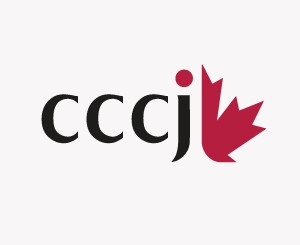Success in Saskatchewan: Enhancing the Partnership
Address to the CCCJ, October 2005
Thank you ladies and gentlemen for inviting me to this luncheon to talk about the partnerships and the opportunities that Japan and Saskatchewan share. It is an honour to meet with Canada's second-largest international Chamber of Commerce. In my view, the role you play for the Canadian business community in Japan and for those planning to enter the Japanese market is vital to Saskatchewan.
This is my first visit to Japan, and I've been delighted at the reception and hospitality I've received so far. As many of you already know, there is an enduring bond between our people and our business communities. My purpose with this visit is to further strengthen that bond.
To achieve this objective, I believe it is in our mutual interest to:
1. expand and build upon Saskatchewan's natural strengths;
2. both expand and collaborate in research and innovation; and,
3. broaden the scope of our economic engagement.
Before addressing these points in more detail I would like to inform you of some recent developments in Saskatchewan. Just last month we released a new action plan for Saskatchewan's economy.
Expanding international trade and welcoming new investment into Saskatchewan is an important part of that plan. But it's not just a government plan. At an economic summit held in January, leaders from business, labour, research, education, youth and our Aboriginal community came together to work on a collective vision to secure the prosperity we've worked so hard to develop.
The plan we created together is designed to build on the strength of our natural resources; employ new technologies to expand on our success in innovation and competitiveness; and further broaden our mature, stable and diversified economy. Increased trade and expanded foreign investment are key elements of that plan, and that's why I am here in Tokyo today, coming from similar visits in Hong Kong and Beijing in the past week.
Statistics from the U.N. and the WTO show that Japan ranks among the top-five countries in the world as a market for agricultural and manufactured products and commercial services, and as a source of technological innovation. They also show that Japan's stock of foreign direct investment is among the world's highest. They show, too, that Japan's economic integration with its neighbour, China, is intensifying rapidly, making your country an exciting platform for and potential partner with Saskatchewan companies interested in doing business in and with both Japan and China.
Japan is of course Canada's third largest export market and an important friend in the Asia-Pacific region. Canada-Japan trade and investment exceeds $40 billion Canadian every year. Our trade relationship is based on equality and partnership and shows a good balance: Canada's exports to Japan are just a little under $10 billion a year, and Japan's exports to Canada are just a little over $10 billion. Canada's trade relationship with Japan is long standing, mature and reliable. And Saskatchewan is a key element of Canada-Japanese trade.
Canada is an energy superpower. It may come as a surprise to you that Saskatchewan is a powerhouse within this energy superpower and is now responsible for one-third of all of Canada's energy production - thirty-three percent. And, we have tremendous room to grow. In the traditional oil and gas field for instance, with the kind of world prices that we're seeing, we have buried beneath the Saskatchewan soil one trillion dollars worth of oil, much of it hard to recover. But we're developing the new technologies needed to go get it.
With a booming energy sector, strong manufacturing sector and solid resource economy, Saskatchewan is now one of the most prosperous provinces in Canada. We are growing and will continue to grow, creating even better opportunities for both trade and investment.
The economic indicators are positive and the economic projections are very encouraging. According to Statistics Canada, Saskatchewan ranked third in Canada in per capita GDP growth from 1992 to 2003. In 2003 and 2004, Saskatchewan had a composite growth rate in real Gross Domestic Product of 8.1%, the highest in the nation.
Last year, our productivity growth in Saskatchewan led Canada. Also last year, our exports were up over 18 percent, our manufacturing shipments up three times the national average. And, this year, investment growth in Saskatchewan is predicted to be over 12 percent, or more than double the national average. And Saskatchewan welcomes Japanese investment.
Expanding and building on our natural strengths
Saskatchewan and Japan have done much together in the energy sector and agri-food industry to build on our natural strengths. While this is true, there is much more that we can do.
As I mentioned, Saskatchewan produces fully one third of Canada's energy. We are developing the new technologies needed to recover and refine the one trillion dollars worth of oil we have buried beneath Saskatchewan soil. We are also diversifying our energy, and developing alternative energy sources such as ethanol, wind power, biofuel and even hydrogen as an energy source.
We are an important supplier of uranium for the 55 nuclear reactors in Japan. What does that mean in practical terms? Well, the simplest way to answer that is to ask you to look up and count the light bulbs in this room. One in ten of those light bulbs are powered by uranium from Saskatchewan.
Now we need to take the next step. Right now, about five per cent of Saskatchewan's uranium production comes to Japan. I'd like to see that relationship develop further. Japan has announced it is going to double the amount of electricity generated by nuclear power by the year 2050. We would like Saskatchewan uranium to power those new reactors.
Saskatchewan's energy potential alone is phenomenal but our natural strengths don't end there. We have phenomenal reserves of potash buried beneath our ground. We know that, in a world that will require high quality food and food production, this fertilizing agent that is in our soil, will be in great demand. We've seen the expansion. We've changed some of the royalties this year and the industry has responded with some $600 million (Canadian) in new investment.
Agriculture is another great part of our trading relationship, fully one-half of our canola is exported to Japan, a good market for us and one of the world's best vegetable oils for you. And with a history as the 'wheat province' it should come as no surprise that cereal grains are also an important element of our trade. This is not just trade in bulk commodities. Our close and long-standing working relationship has resulted in exciting developments in areas such as beer production and bakery products.
At this point I would like to turn briefly to something that is not currently part of our agricultural trade. As you know, two and a half years ago a case of mad cow, or BSE, was discovered in Canada. Borders around the world closed to Canadian beef even as we worked to ensure this one case had not spread throughout the herd. It had not.
Canada took steps to rectify the issue, by expanding the ban on cattle feed, increased surveillance of the herd and better animal tracking and identification. We worked with our scientists, and welcomed scientists from around the world to verify our findings. Today, I'm pleased to note that the borders have been opened in the United States, Mexico, Hong Kong and Macau.
Canada and Saskatchewan recognize and respect Japan's insistence on the highest standards of food safety. Canada and Saskatchewan applaud Japan's position that decisions on reopening your borders will be based on sound science. That is a position and a belief we share. The U.S. believes that Canada now complies with the highest international standards governing animal health and safety and trade, and it has re-opened its border to our beef on that basis. We encourage Japan to do likewise.
Extending our success in research and innovation
The successes that I mentioned earlier in beer production and bakery products are excellent examples of the outcomes of our continued emphasis on research and development. In the case of beer, Dr. Bryan Harvey from the University of Saskatchewan has worked with Sapporo for a decade to improve the quality of its malting products. I'm very pleased that every time one of Sapporo's customers drinks their beer, they are getting a little taste of Saskatchewan at the same time.
Also in agribusiness, Cecil Werner of CanMar Grains in Saskatchewan has developed a new product with Golden Roasted Flax Seed, which is used in baked goods by Nippon Flour Mills. CanMar's work is an example of how Saskatchewan firms have demonstrated their commitment to the Japanese market in the resources and time they devote to educating customers, modifying their product to suit the Japanese requirements, and supporting their importer in educating the Japanese baking industry and the Japanese consumer of the benefits of their specific products.
I bring these two initiatives to your attention in order to demonstrate how seriously we approach research and innovation in Saskatchewan. Saskatchewan's research is based in our universities, our two research parks and is now enhanced with the establishment of one of the most advanced synchrotrons in the world, opened a year ago this month at the University of Saskatchewan.
Synchrotrons allow matter to 'be seen' at the atomic scale. The spin-off benefits of having such a research tool are incredible because it spans every discipline - physics, biology, chemistry and geological sciences. Applications include environmental monitoring, new composite materials, more sophisticated medicines, information technologies, biomedical implants, and other nano structures with motors so small as to fit through the eye of a needle.
The Canadian Light Source Synchrotron, wholly owned and operated by the University of Saskatchewan, has been open for business for one year and is attracting scientists from around the world. It will foster a rich variety of industries and new academic partnerships.
We need to be clear that in Saskatchewan, research and innovation is not just about scientific inquiry. It is also about taking the next step with these new ideas and commercializing them.
Saskatoon's Innovation Place and the related Research Park in Regina now serve as models for research parks around the world for effective transfer of research products to commercial applications. This is something that is of no small importance to our growing manufacturing sector.
With a skilled labour force, a strong educational system, and the geographical good fortune to be placed in the centre of the North American continent, allowing us good access to Canada and the United States, Saskatchewan is a great place for manufacturing.
Hitachi is a prime example. Saskatchewan has had a relationship with Hitachi since 1988, and we are honoured that the very first place Hitachi chose to establish a manufacturing plant outside Japan was in Saskatchewan. In Saskatoon, Hitachi produces high quality heavy electrical machinery to help provide power for the people of Saskatchewan and to export its product throughout North America.
Broadening our economic engagement
Opportunities for Japan and Saskatchewan to broaden our economic engagement go beyond research, innovation and their implications for a stronger manufacturing sector. Beyond a strong and growing business relationship, Saskatchewan offers excellent opportunities for you to visit for pleasure and personal development.
Saskatchewan isn't like anywhere else. Our history and our geography make us unique. Aboriginal culture in Saskatchewan is thousands of years old and thriving today in the traditions of First Nations and Metis peoples. European cultures arrived 250 years ago with the fur trade. Settlers followed 100 years later, and with them came our entry as a province into the Confederation of Canada. It is this wonderful diversity of cultures, expressed in our motto, From many Peoples Strength - that makes us who we are.
It is also the land. Land of Living Skies we call it. It's one of the first things visitors notice - the sunsets, the horizons, the summer thunderstorms, the northern lights. Saskatchewan is over 650,000 square kilometers in size. Contrary to popular belief, over half is covered by forest, a forest the size of the nation of Germany - and one-third by farmland, the traditional postcard image of the prairies. And, another surprise, one-eighth of our province is covered by fresh water. We have more than 100,000 lakes and rivers.
The diversity of landscapes is amazing. Our national and provincial parks are doorways to superb hiking and wildlife watching. Some of our most popular wilderness destinations are easily accessible. Others can only be reached by floatplane, on foot or on horseback. Farm vacations and ranch holidays cater to a wide range of interests, cowboy adventures to teepee encampments. Farm stays show off what Saskatchewan is perhaps most famous for agriculture.
But more than anything else, I think it is the people of Saskatchewan that visitors remember most. You will find us warm-hearted, friendly, and genuinely interested in visitors. We will go out of our way to make your visits special and memorable.
We would love to see more Japanese people in our province and our country, doing business, studying, researching or just visiting. Personal contact is the best means of learning from each other and forming successful relations in whatever business opportunity we pursue.
Let me conclude by reviewing the opportunities we share:
1. Opportunities to expand and build on Saskatchewan's natural strengths in agriculture, mining and manufacturing;
2. opportunities to expand on and collaborate in research and innovation; and,
3. opportunities to broaden the scope of our economic engagement, including wonderful opportunities for tourism.
We have a history of success working with each other. I very much look forward to building on that history and our successful relationship for the continued benefit of Japan, Canada and Saskatchewan.
Thank you very much.



























